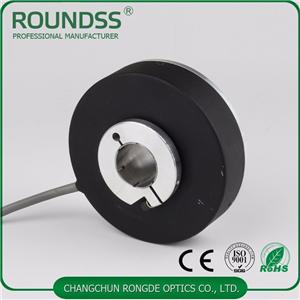- 홈
- >
- 뉴스
- >
- Industry News
- >
- How to determine the resolution of the encoder?
How to determine the resolution of the encoder?
For linear encoders, resolution is the number of units of measure for each distance (inches or millimeters), and for rotary encoders, the number of units per revolution (also known as the number of pulses per revolution, ie PPR) or per Angle Angle Encoder resolution is usually expressed in binary units: a 16-bit resolution rotary encoder will have 65536 (216) increments or PPR per revolution.
The magnetic encoder uses a permanent magnet placed at the edge of the rotor, and the Hall sensor detects the change in the magnetic field as the alternating magnetic pole of the magnet passes. The more magnetic poles and sensors of the encoder, the higher the resolution.
For a photoelectric encoder, the grating disk is patterned to have a transparent or opaque region that is sensed by the photodetector when the source is illuminated. The number and pattern of opaque and transparent portions determine the resolution. Optical encoders typically have between 100 and 6000 segments per revolution, which means they can provide resolutions from 3.6 to 0.06 degrees.
An incremental encoder produces one or two square wave pulses, called A and B. When only one pulse is generated, the encoder can detect the position. To detect position and orientation, the encoder uses quadrature outputs to produce two pulses with a phase difference of 90 degrees and B. The direction depends on which channel is leading. Some incremental encoders also produce a third channel (commonly referred to as Z) with a single pulse that is used as a zero index or reference position.
For a rotary encoder, the position is calculated by dividing the calculated number of edges by the product of the number of pulses per revolution described above (1, 2 or 4) and the type of encoding, and then multiplying the result by 360 to obtain the motion speed. .
For linear encoders, the position is calculated by dividing the product of the number of pulses per distance from the type of encoding by the number of edges. This result is then multiplied by the reciprocal of the pulse per millimeter (or per inch).
Absolute encoders have multiple concentric rings or tracks of opaque and transparent segments on the encoder disk. These tracks start from the middle of the disk, and as they expand outward, the number of segments per track is doubled compared to the previous track. The first track has a transparent and an opaque ring, the second track has two, the third track has four, and so on. The number of tracks determines the resolution of the encoder.
Absolute rotary encoders are further distinguished by single or multiple turns. The single-turn encoder uses a code disc, and the encoder repeats the digital value of the position every revolution. When measuring more than one revolution, the single-turn encoder cannot determine how many turns the encoder has completed.
Multi-turn encoders are required when actual applications require multiple encoder turns. Multi-turn encoders do not repeat digital position values until the maximum encoder revolutions are reached (usually 4096). The most common type of multi-turn encoder is a version of a raster disk that uses multiple gears meshed together. The resolution of this encoder is the sum of the output of each disk.




